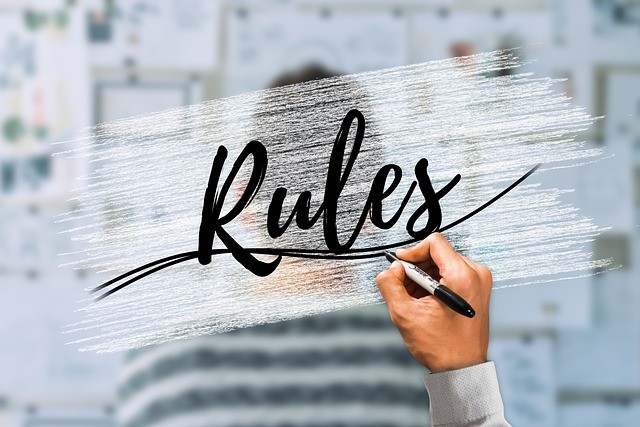
What Should be Included in a Settlement Agreement?
The Importance of a Comprehensive Settlement Agreement
Understanding the intricacies of settlement agreements is paramount for employers, business owners and managers. When issues arise in the workplace, these agreements play a crucial role in ensuring a smooth resolution. This article looks into whats included in a settlement agreement to encompass and ensure it’s both fair and legally binding.
At its core, a settlement agreement is a legally-binding document. It marks the conclusion of a dispute between an employer and employee, often in circumstances surrounding the termination of employment. Crafting a solid agreement not only safeguards the interests of both parties but also eliminates the risk of future disagreements. So, what are the essential components that should be included in a settlement agreement?
Identity of the Parties
- Start by clearly defining who is involved. Whether it’s the employee and employer or multiple parties, precision is key.
Claims to be settled
- Every agreement must list the specific claims, disputes, or grievances it aims to resolve. Clear communication prevents any ambiguity later on.
Compensation Details
- Be transparent about any sums of money involved. Whether it’s a severance package or compensation for grievances, all financial details should be meticulously detailed.
Confidentiality Clauses
- These clauses ensure sensitive information remains protected. By establishing clear boundaries on non-disclosure, you protect both the business and the individual involved.
Return of Property
- From company laptops to sensitive documents, provisions regarding the return of company assets are vital. Clearly outline what needs returning and in what condition.
It’s worth noting that this process isn’t merely a box-ticking exercise. Writing a comprehensive settlement agreement is about foresight, understanding potential pitfalls and seeking the best possible outcome for both parties. While many elements may seem straightforward, legal nuances can make a significant difference in how they’re perceived and interpreted.
Always remember, a settlement agreement’s strength lies in its clarity and comprehensiveness. Whether you’re an employer aiming to protect your business or an employee seeking fairness, the right guidance is indispensable. For a deeper understanding of employment law and its intricacies, don’t hesitate to explore our resources or get in touch with our team of experts.
Essential Components Every Settlement Agreement Must Contain
Settlement agreements, when crafted with precision, act as the linchpin of employment law, providing protection to both the employer and the employee. Their strength lies in the intricacies and comprehensiveness of their components. Here, we’ll quickly highlight the essential facets every such agreement should encompass.
At the very outset, it’s imperative to name all involved parties. This isn’t limited to just the employee and employer but could also span to third-party entities. This clarity from the get-go ensures there’s no room for ambiguity further down the line.
- Detail every claim, dispute, or grievance being settled. This mutual understanding acts as the backbone of the entire agreement.
- Clearly enumerate all financial commitments, including severances and compensations, ensuring nothing is left to assumption.
- Set boundaries on what information can be disclosed, focusing on preserving business secrets and individual privacy.
- Itemize company properties expected to be returned, highlighting specific conditions or timelines associated with them.
- Agree on post-departure protocols, ensuring communications, especially references, are handled with decorum and respect.
The essence of a rock-solid settlement agreement lies not just in its clauses but in the spirit with which it is drafted and executed. Each enumerated point, no matter how rudimentary it might seem, has the potential to make or break the agreement’s effectiveness.
Employers should aim for a blend of legal robustness and real-world practicality when formulating these agreements. And in moments of uncertainty, always remember: expert guidance can be requested to steer you clear of potential pitfalls.
Navigating the Complexities: Avoiding Common Mistakes
Settlement agreements serve as the foundation of conflict resolution in employment law. But like all legal documents, they can be a minefield of potential mistakes. As employers, it’s crucial to navigate these complexities with foresight and diligence. While the realm of possible errors is vast, understanding a few common pitfalls can significantly streamline the drafting process.
One primary oversight is the ambiguous or incomplete detailing of claims. It’s essential to be exhaustive in listing the grievances, disputes, or misunderstandings being addressed. A lack of clarity today can breed contention tomorrow. Hence, every claim, however minor it may seem, must find its rightful place in the agreement.
- Financial terms, often the crux of many agreements, must be transparent and included in a settlement agreement. Vague terms, hidden clauses, or unspecific amounts can lead to disputes or even render the agreement null.
- Overlooking the return of company property is another blunder. Be it tangible assets like laptops or intangible ones like data, every item should be catalogued with clear return guidelines.
- Confidentiality clauses, when ill-defined, can jeopardise a company’s sensitive information. It’s not just about what employees can’t disclose but also about what they can, and the repercussions of breaching this clause.
- Post-termination restrictions are sometimes too broad or too stringent, making them unenforceable. They should be reasonable, clearly defined, and absolutely necessary for the protection of the business and be included in a settlement agreement.
Other Common Mistakes
Another common misstep is neglecting to consider the emotional and psychological nuances of the departing employee. Remember, a settlement agreement is not just a cold, legal document. It’s a reflection of the respect and understanding between the employer and the employee. As such, it should be crafted with empathy, ensuring that both parties part on good terms and with mutual respect.
Lastly, while it’s tempting to use templates or previous agreements as a starting point, each situation is unique. Relying too heavily on past documents can lead to overlooking specific nuances of the current situation. Always approach each settlement agreement with fresh eyes and the understanding that it needs to cater to the individual circumstances at hand.
In conclusion, a well-crafted settlement agreement is a blend of legal precision, business foresight, and human understanding. Always be meticulous, seek expert advice when in doubt and remember the human element behind every clause and stipulation.
Considering the Employee’s Perspective: Why It Matters whats Included in a Settlement Agreement
The area of employment law, especially when it comes to settlement agreements, is often approached with a predominantly employer-centric mindset. While protecting the company’s interests is paramount, acknowledging and considering the employee’s perspective is equally crucial. Integrating this dual approach ensures not just legal compliance but also fosters a positive workplace culture. Let’s look deeper into why understanding the employee’s viewpoint is indispensable.
At the heart of every settlement agreement lies a dispute or disagreement. By its very nature, this means there are two sides to the story. Recognising the employee’s perspective helps identify the root causes, ensuring more effective resolutions. It’s not merely about resolving the current dispute but also about pre-empting future conflicts.
- Empathy builds trust. Demonstrating understanding of an employee’s feelings and concerns fortifies trust, essential for any professional relationship.
- Boosts morale and reputation. When other employees see their peers being treated fairly and with respect, it instills confidence and bolsters the company’s reputation as an equitable employer.
- It aids in smoother negotiations. Understanding the employee’s standpoint can streamline the negotiation process, making it more efficient and less contentious.
- Ensures comprehensive agreements. Taking into account the employee’s concerns and expectations ensures a more robust and inclusive settlement agreement.
Other Benefits
But it’s not just about the tangible benefits. Remember, every employee is a spokesperson for your company, whether current or former. Their experiences, especially during disputes, significantly influence the narrative they share with peers, potential hires, and sometimes even publicly. By considering their perspective, you’re not just resolving a dispute; you’re shaping the narrative of your company’s ethos and values.
Moreover, what’s included in a settlement agreement is more than a legal tool; it’s a testament to the company’s values. Its tone, content and approach speak volumes about how the organisation perceives its employees. An agreement that emanates respect, understanding, and fairness is reflective of a company that values its human capital.
In conclusion, while the legal and business aspects of a settlement agreement are undeniably vital, the human element should not be missed. As employers, your goal should extend beyond mere conflict resolution. Aim to build bridges, foster trust, and, most importantly, ensure that every settlement agreement stands as a testament to your company’s commitment to its employees.
Ensuring Legal Compliance: More Than Just a Signature
The intricacies of employment law are vast and can sometimes seem daunting. Crafting a settlement agreement is not just about getting an employee’s signature on a piece of paper. It’s about ensuring every clause, every term, and every stipulation adheres to the legal requirements. The consequences of overlooking this can be severe, both legally and reputationally. Let’s explore the pivotal role of legal compliance in settlement agreements and why it’s more than just a mere formality.
First and foremost, a legally compliant agreement serves as a protective shield. It safeguards the rights of both the employer and the employee, ensuring neither party is disadvantaged. A binding contract, is only as strong as its adherence to the law. Legal breaches can lead to expensive litigation, a scenario both parties would ideally want to avoid. Moreover, non-compliance can jeopardise your company’s reputation, a ripple effect you can explore more on our employers employment law page.
- Always involve a legal counsel. Having an expert review the agreement ensures no overlooked nuances or unintentional breaches.
- Stay updated. Employment laws evolve, and clauses that were once valid may no longer be so. Regularly review and update your agreements.
- Ensure understanding. Both parties should fully understand every clause. Ambiguity can lead to future disputes and potential non-compliance.
- Consider the bigger picture. While the agreement addresses a specific dispute, always ensure it aligns with broader company policies and the prevailing legal landscape.
A settlement agreement is not merely a reactive tool
Moreover, it’s essential to remember that a settlement agreement is not merely a reactive tool but also a proactive one. A well-drafted, legally compliant agreement can pre-empt potential disputes, setting clear expectations and boundaries from the outset. This proactive approach not only minimises legal risks but also fosters a culture of transparency and mutual respect. For insights into fostering such a culture, consider exploring our employer best practices page.
In conclusion, ensuring legal compliance and what’s included in a settlement agreements is not just a tick-box exercise. It’s an embodiment of the company’s commitment to fairness, transparency, and respect. As you condsider the intricacies of employment law, always approach settlement agreements with the diligence they demand, ensuring they demonstrate legal integrity and mutual trust.
Reaching a Mutually Beneficial Agreement: The Art of Negotiation
In the area of employment law, more than mere legal documents are included in a settlement agreement; they represent the culmination of discussions, understanding, and negotiations between two parties. The art of negotiation is pivotal, ensuring that both the employer and the employee emerge from the dispute feeling heard, respected and satisfied. Crafting an agreement is not just about legalities; it’s about finding common ground.
One of the fundamental principles of successful negotiation is active listening. It’s essential to hear and understand the concerns and priorities of the other party. This doesn’t mean you have to agree with everything, but by demonstrating genuine interest in their viewpoint, you pave the way for collaborative solutions. For more insights on active listening, consider visiting MindTools, a resource that offers a deep dive into effective communication strategies.
While the dynamics of every negotiation differ, some universally applicable strategies can guide you to a mutually beneficial agreement:
- Prepare thoroughly: Enter negotiations with a clear understanding of what you want and what you’re willing to compromise on.
- Establish rapport: A positive, respectful relationship can significantly influence the negotiation’s outcome.
- Seek win-win: Instead of a zero-sum approach, aim for solutions that benefit both parties.
- Stay calm and patient: Emotions can cloud judgment. Approach the discussion with an open mind and patience.
Furthermore, it’s essential to be transparent about your constraints. Whether they’re financial, policy-driven, or stemming from external factors, being upfront about what’s feasible and what isn’t can prevent misunderstandings and foster a sense of trust. Remember, a successful negotiation isn’t about one party winning and the other losing; it’s about finding a balanced solution that addresses the core concerns of both sides.
In conclusion, the process of reaching a mutually beneficial settlement agreement is rooted in effective negotiation. It’s a conversation involving give and take, of understanding and compromise. By mastering the art of negotiation, employers can navigate disputes smoothly, ensuring agreements that stand the test of time and uphold the values of both parties involved.
Call John Bloor at EBS Law on 01625 87 4400 if you are an employer and need free Employment Law Advice.


